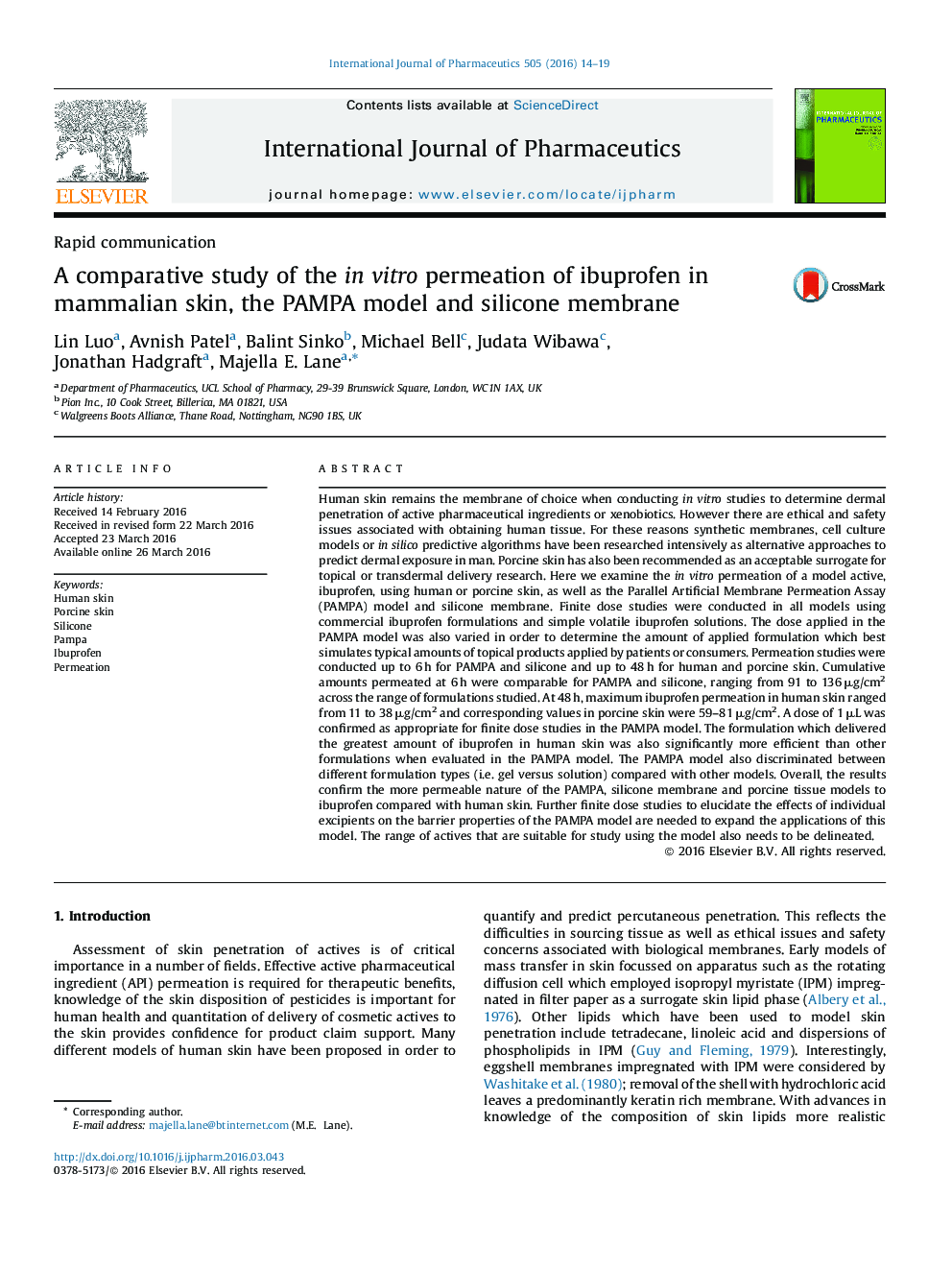| کد مقاله | کد نشریه | سال انتشار | مقاله انگلیسی | نسخه تمام متن |
|---|---|---|---|---|
| 2500894 | 1557316 | 2016 | 6 صفحه PDF | دانلود رایگان |

Human skin remains the membrane of choice when conducting in vitro studies to determine dermal penetration of active pharmaceutical ingredients or xenobiotics. However there are ethical and safety issues associated with obtaining human tissue. For these reasons synthetic membranes, cell culture models or in silico predictive algorithms have been researched intensively as alternative approaches to predict dermal exposure in man. Porcine skin has also been recommended as an acceptable surrogate for topical or transdermal delivery research. Here we examine the in vitro permeation of a model active, ibuprofen, using human or porcine skin, as well as the Parallel Artificial Membrane Permeation Assay (PAMPA) model and silicone membrane. Finite dose studies were conducted in all models using commercial ibuprofen formulations and simple volatile ibuprofen solutions. The dose applied in the PAMPA model was also varied in order to determine the amount of applied formulation which best simulates typical amounts of topical products applied by patients or consumers. Permeation studies were conducted up to 6 h for PAMPA and silicone and up to 48 h for human and porcine skin. Cumulative amounts permeated at 6 h were comparable for PAMPA and silicone, ranging from 91 to 136 μg/cm2 across the range of formulations studied. At 48 h, maximum ibuprofen permeation in human skin ranged from 11 to 38 μg/cm2 and corresponding values in porcine skin were 59–81 μg/cm2. A dose of 1 μL was confirmed as appropriate for finite dose studies in the PAMPA model. The formulation which delivered the greatest amount of ibuprofen in human skin was also significantly more efficient than other formulations when evaluated in the PAMPA model. The PAMPA model also discriminated between different formulation types (i.e. gel versus solution) compared with other models. Overall, the results confirm the more permeable nature of the PAMPA, silicone membrane and porcine tissue models to ibuprofen compared with human skin. Further finite dose studies to elucidate the effects of individual excipients on the barrier properties of the PAMPA model are needed to expand the applications of this model. The range of actives that are suitable for study using the model also needs to be delineated.
Figure optionsDownload high-quality image (104 K)Download as PowerPoint slide
Journal: International Journal of Pharmaceutics - Volume 505, Issues 1–2, 30 May 2016, Pages 14–19